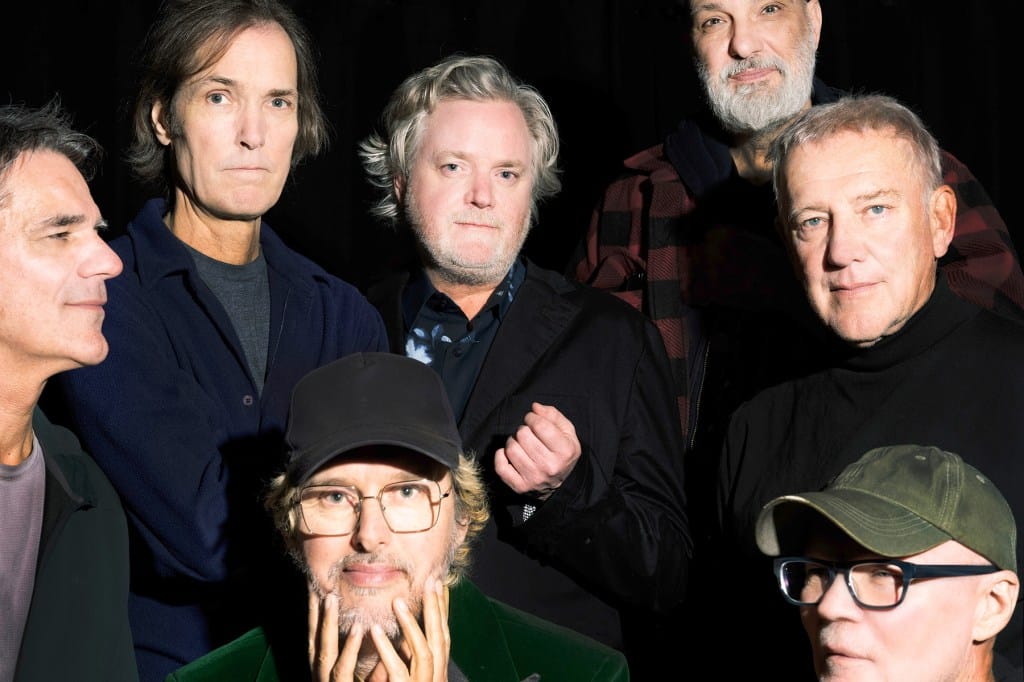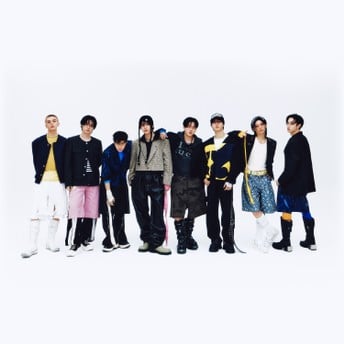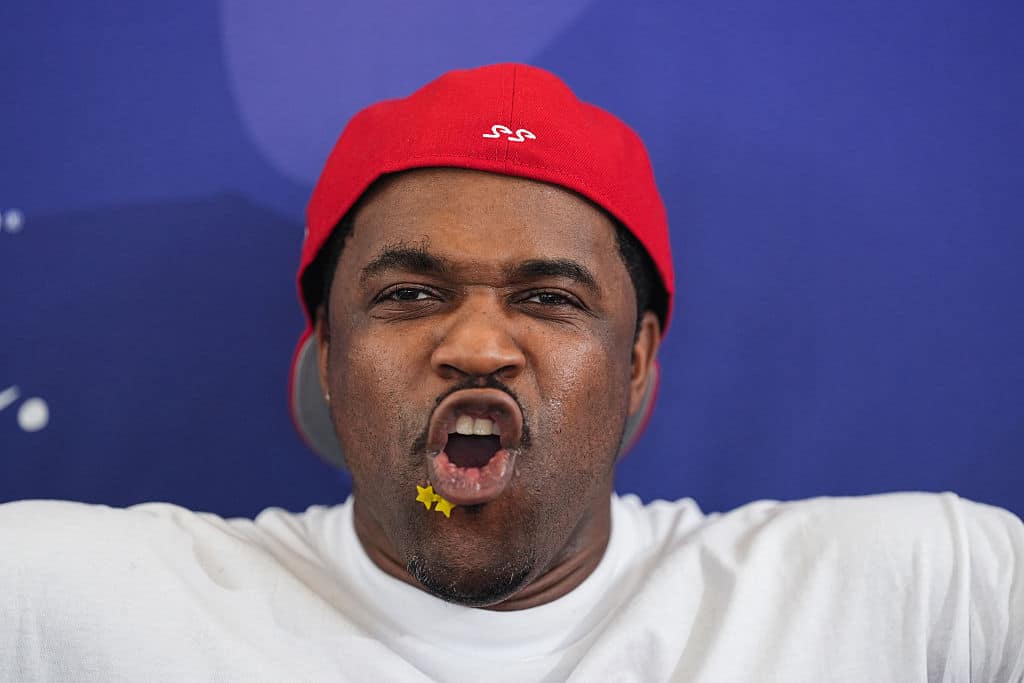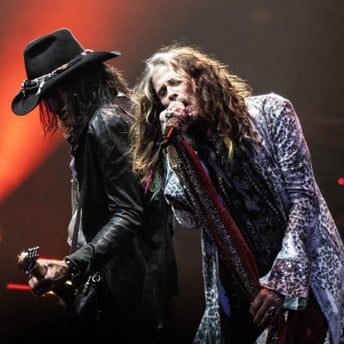Alex Lifeson on New Music With Rheostatics: ‘There Are No Rules or Expectations’
Written by djfrosty on November 21, 2025

Trending on Billboard
Thirty years ago, Toronto’s Rheostatics went high-concept with Music Inspired by the Group of Seven, a National Gallery of Canada commission to pay homage to early 20th century Canadian landscape painters. It was an arty and abstract conceptual piece, incorporating free-form composition and recorded dialogue from the painters and historical figures such as Britain’s Queen Elizabeth, the Queen Mother.
Ever since then, the band’s Dave Bidini tells Billboard, “We’ve always bandied about, ‘How can we do something like that again?’ So we’ve been searching for a while, and one night I literally had my head on the pillow, and I thought about the Great Lakes.”
The Great Lakes Suite, out Friday (Nov. 21), is the Juno Award-winning Rheostatics’ first album since Here Come the Wolves in 2019. The album’s seven core members — Bidini, Barenaked Ladies’ Kevin Hearn, Rush guitarist Alex Lifeson, Hugh Marsh, Dave Clark, Don Kerr and Tim Vesely — recorded the 18-song set over four days, with Hearn and Vesely sculpting lengthy, improvised pieces into more concise tracks. A number of guest performers — including Laurie Anderson, Lifeson’s Envy of None bandmate Maiah Wynne, Inuk throat singer Tanya Tagaq and, posthumously, Tragically Hip frontman Gord Downie — were also incorporated into the mix.
“Canada is such a disparate and disconnected place in a lot of ways, and there are few things that large groups of people have in common,” Hearn explains. “I think the Great Lakes are one of those things that bind us together. So it was right there. The Group of Seven were primarily landscape painters…On this project we decided to skip the artists and just go straight to the source and straight to nature and straight to something we’d all grown up with.”
Bidini feels that impact could extend across the border, too. “In our geopolitical times it’s important to point towards things that bring us together rather than tear us apart,” he says. “The Great Lakes is something both countries live and share and want to protect together and make sure they continue to bind us as opposed to other things that come between us.”
Lifeson’s involvement, of course, raises the project’s visibility — especially after the recent announcement of Rush’s Fifty Something Tour for 2026. “The timing was great,” Bidini acknowledges. “When I first emailed Alex to tell him about this idea, he said he’d actually woken up that week thinking to himself, ‘I can’t play golf for the rest of my life, right?’ So he started to think about, ‘OK, maybe I should be making some music here.’ There were challenges with timing and scheduling for sure, but I think the project landed at a time in all of our lives when we were looking to do something like this.”
Lifeson — who’s released two albums with Envy of None, including Stygian Wavz in March — says he certainly was. “I have been getting together with the guys occasionally over the years to play for the joy of it,” he notes. “There is no mystery or much forethought in approach; the freedom to play whatever your brain convinces your fingers to do is the charm of this project. I give no thought to the end result, only to the moment. This was an entirely organic experience.” Lifeson’s enthusiasm, meanwhile, further fueled the other Rheostatics.
“He acted musically and personally like a big brother throughout this whole project,” Hearn says. “He would wait in the weeds and play in a supportive way, always tasteful. But then there would arise these moments where he would just soar and you’d be listening in your headphones and playing and going, ‘Oh my God, THAT’s the guy! There he is!’” Lifeson, meanwhile, enjoyed some new experiences of his own, most notably Tagaq’s performance on the track “Tasiq.”
“I introduced them and they had a sweet conversation,” Hearn says, “but Alex had no idea what was about to happen in the studio. It was one of the biggest joys in this whole process to see the look on his face as she transformed, while we were improvising, into a sea monster, and she was howling and growling and singing shrieking high notes that could break windows. And (Lifeson) was looking at each of us with his eyes wide open, and then when we finished he turned to me and said, ‘I LOVE her!’”
“There are no rules or expectations,” Lifeson — who also mixed one track, “Lake Michigan Triangle,” featuring Wynne — says of The Great Lakes Suite sessions. “Everyone arrives, has a hug and sets up their gear. As soon as you’re set up and making noise, you play. Rush and Envy of None are different recording requirements that demand more traditional studio approaches.”
The first trial session for The Great Lakes Suite took place about a year and a half ago — which Hearn and Bidini say nobody had the temerity to record at the time. “There was no plan and there was nothing prepared; we just got together to make some noise,” Bidini recalls, with Hearn adding, “From there we went, ‘This is how we do it…but next let’s do it in a studio and just have everyone miced up properly and record everything.’ It was almost six months later before we were able to do it again.” In all, the Rheostatics convened for four full-day sessions, yielding more than 20 hours of music.
“Each improvised peace was between 10 and 20 minutes,” says Hearn, who began writing the album-closing “The Inland Sea” in Duluth, Minn., near the shores of Lake Superior, while on tour with Barenaked Ladies, partially inspired by Michigan-based marine artist Robert McGreevy’s book The Lost Legends of the Lake. (His images were incorporated into the song’s music video.) “It took me days to go through, and make notes. There were some obvious standouts and Tim Vesely started shaping them.”
Bidini adds that, “One of the challenges for the record was flow and sequence. Sometimes we would record 18 minutes because it took 14 minutes to get to where (the song) had to be. I think we landed where we needed to land in terms of it being a journey.”
The Suite incorporates spoken word pieces as well, by professor and former Mississaugas of the New Credit First Nation Chief Stacey LaForme and Hearn’s uncle Neil O’Donnell, a geologist, among others. The piece by Downie for “The Drop Off,” meanwhile, came from a presentation at a fundraiser for Lake Ontario Waterkeeper, a Toronto-based environmental justice advocacy group. “I remember hearing it and it always stayed with me,” Bidini says. “Not a lot of people knew (Downie) as a public speaker; it was out of the context of his (music) performances, and he didn’t do that a lot. But he was great speaking to large rooms. Gord was always an advocate for water, conservancy, advocacy — especially around the lakes, and it seemed like something we could try. We wanted to give that story some air and some attention. Ultimately if there’s any kind of consciousness raising in terms of how people view the lakes, coming through him, it can be a powerful voice for good in that sense.”
Rheostatics will gather to celebrate The Great Lakes Suite‘s release on Friday and Saturday at TD Music Hall in Toronto, which will be accompanied with visuals custom-made for the presentation. Hearn says there’s enough unused material to possibly fashion additional songs from. Despite their own busy schedules, Rheostatics’ core crew is hoping that won’t be the last you see of the Suite in concert.
“The hope is, as this project moves forward, we can bring it to other places,” Bidini says. “That’s one of Alex’s contributions, in terms of how we go about this live; he kind of said, ‘Well, I don’t know if I have the time to learn this record’ — he’s got a lot of stuff going on, as we all do. We realized one of the joys of creating this record was creating something out of nothing, so we’re going to lean on that a little bit live, to just create and invent stuff in the moment, as a template for how we do this moving forward.”

 State Champ Radio
State Champ Radio 





